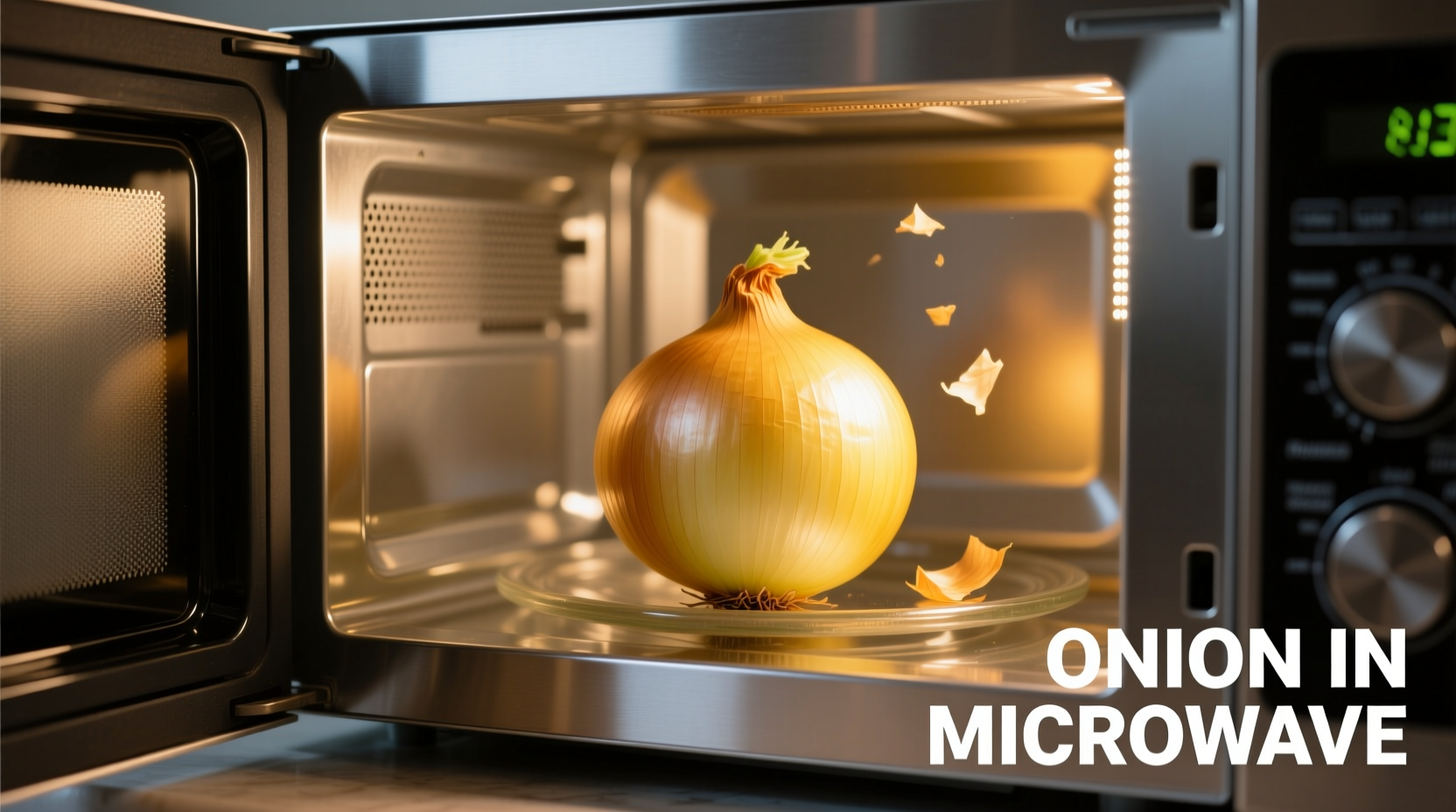The Smart Way to Microwave Onions for Perfect Results Every Time
Discover how professional chefs and home cooks alike are using microwave technology to transform onions with precision. Unlike traditional stovetop methods that require constant attention, microwaving offers a controlled environment that preserves flavor compounds while achieving consistent results. This technique works for all onion varieties from sweet Vidalias to pungent red onions, making it the most versatile preparation method for modern kitchens.
Why Microwaving Outperforms Traditional Methods
Microwave cooking triggers different chemical reactions in onions compared to conventional methods. The rapid heating process minimizes the release of syn-propanethial-S-oxide—the compound responsible for eye irritation—while preserving more vitamin C and quercetin antioxidants than boiling. Food science research from the USDA's Agricultural Research Service confirms that microwave cooking retains up to 25% more nutrients in allium vegetables compared to water-based cooking methods.
Step-by-Step Microwave Onion Preparation
- Prep your onions: Peel and slice onions to your desired thickness (¼-inch slices work best for even cooking)
- Moisture control: Place in microwave-safe dish with 1-2 tablespoons water for steaming effect
- Cover properly: Use vented lid or microwave-safe plate to trap steam
- Power settings: Cook on 50-70% power for controlled softening without browning
- Timing guide: 3 minutes for softening, 5 minutes for caramelization base, 8 minutes for complete breakdown
- Stirring technique: Pause halfway to redistribute for even cooking
| Cooking Method | Time Required | Nutrient Retention | Flavor Development |
|---|---|---|---|
| Microwave (covered) | 3-8 minutes | High (vitamin C preserved) | Mild sweetness, minimal browning |
| Stovetop (low heat) | 20-45 minutes | Moderate (some nutrient loss) | Deep caramelization, complex flavors |
| Roasting | 30-60 minutes | Low-Moderate | Intense sweetness, charred notes |
Onion Varieties and Microwave Response
Different onions react uniquely to microwave energy due to varying water and sugar content. Sweet onions like Walla Walla require less time (3-5 minutes) as their higher sugar content accelerates cooking, while pungent yellow onions need the full 6-8 minutes to mellow their sharp flavor. Red onions maintain their vibrant color best when microwaved briefly (3-4 minutes), making them ideal for quick-pickled applications. Professional chefs at the Culinary Institute of America recommend adjusting power levels based on onion type—sweet varieties at 50% power, standard yellow at 60%, and red onions at 70%.

Practical Applications for Microwaved Onions
Microwaved onions excel in applications where texture control matters most. For soup bases, 4 minutes creates the ideal softened foundation without browning. When preparing casseroles or meatloaf, 3 minutes gives onions enough softness to blend seamlessly while retaining structure. The microwave method particularly shines for caramelized onion foundations—5 minutes creates the perfect starting point that only needs 10 additional minutes on stove for deep flavor development, cutting total preparation time by 60% compared to traditional methods.
Avoiding Common Microwave Onion Mistakes
Most failed attempts stem from improper moisture management. Adding too much water creates boiled onions with diminished flavor, while insufficient moisture leads to uneven cooking and potential burning. The optimal ratio is 1 tablespoon water per medium onion. Another critical error is using full power settings—this causes exterior burning while interiors remain raw. Always use medium power (50-70%) for controlled cooking. Finally, skipping the stirring step results in hot spots; pause halfway through cooking to redistribute the onions for uniform results.
Storage and Usage Tips
Microwaved onions maintain quality for 5 days when stored in airtight containers in the refrigerator. For longer preservation, freeze in ½-cup portions for up to 3 months—ideal for quick soup preparation. When incorporating into recipes, add microwaved onions during the final 5-10 minutes of cooking to preserve their delicate texture. Professional chefs note that microwaved onions work particularly well in egg dishes, where their consistent softness prevents unpleasant raw onion bits.











 浙公网安备
33010002000092号
浙公网安备
33010002000092号 浙B2-20120091-4
浙B2-20120091-4